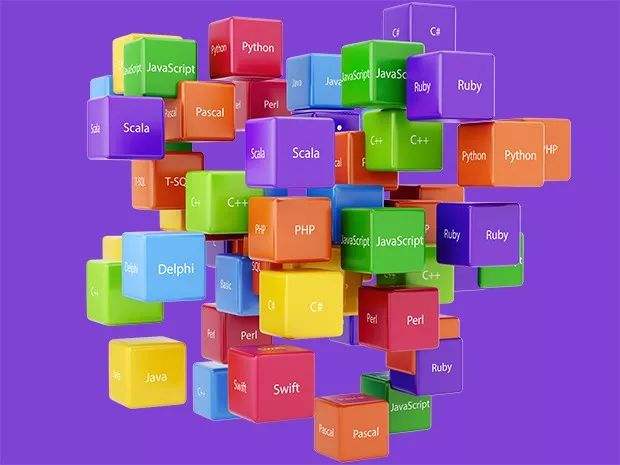java基础——方法的重写、多态+instanceof
方法的重写
-
前提:需要有继承关系:子类 重写 父类 的 方法。
-
注意点:
- 方法名必须相同
- 参数列表必须相同
- 修饰符:方位可以扩大,但是不能缩小: Public>Protected>Default>Private
- 抛出的异常:范围,可以被缩小,但不能扩大;classNotFoundException
-
重写,子类的方法和父类必须要一致,但是方法体不同!
为什么要重写:
- 父类的功能 子类不一定需要,或者不一定满足
- 快捷键:Alt+Insert —–>override
public class B {
public B() {
}
public void test() {
System.out.println("B ===> test");
}
}
=======================
public class A extends B{
public A() {
super();
}
// override 表示重写
@Override // 相当于注释,但是有意义的注释
public void test() {
System.out.println("A ===>test ");
}
}
=======================
public class Application {
public static void main(String[] args) {
//子类,创造的子类的对象, 其对象可以调用 子类的 方法
A a = new A();
a.test();
System.out.println("============");
// 子类创造的父类对象。由于被限制在父类,只能用父类可以继承的东西,、
// 所以,其调用的方法,必须是父类可以继承的(即父类的方法)
B b = new A();
b.test();
}
}
多态
-
即同一种方法可以根据发送对象的不同二采用多种不同的行为方式。
-
一个对象的实际类型是确定的,但是可以指向对象的引用的类型有很多(父类 或 有关系的类)
-
多态存在的条件:
- 有继承关系
- 子类引用父类的方法
- 父类引用指向子类的对象
-
注意:多态是方法的多态,属性没有多态性
-
instanceof (类型转换) 引用类型,判断一个对象是什么类型
多态的注意事项:
1. 多态是方法的多态,其属性没有多态
2. 父类和子类,有联系 类型转换异常! ClassCastException!
3. 存在条件:继承关系 ,方法需要被重写,父类的引用指向子类对象!Father f1 = new son();
不能被重写东西:
1. static 方法,属于类,它不属于实例
2. final 常量;
3. private 方法
public class Person {
public void run(){
System.out.println("Person Run");
}
}
==================================
public class Student extends Person {
@Override
public void run() {
System.out.println("Son run");;
}
public void eat(){
System.out.println("Son Eat");
}
}
=====================================
public class Application {
public static void main(String[] args) {
//一个对象的实际类型是确定的
//new Student
//new Person
//但是可以指向的引用类型就不确定了;父类的引用指向子类
// student(子类引用)能调用的方法都是自己的,或者继承父类的
Student s1 = new Student();
// person(父类引用)可以指向子类,但不能调用子类特有的方法
Person s2 = new Student();
Object s3 = new Student();
s1.run();
s1.eat();
//对象能执行那些方法,主要看对象左边的类型和右边关系不大
//子类重写了父类的方法,执行子类的方法
s2.run();
((Student) s2).eat();
}
}
instanceof
- 判断两个类之间是否存在父子关系
public class Student extends Person {
}
====================================
public class Teacher extends Person{
}
====================================
public class Student extends Person{
}
====================================
public class Application {
public static void main(String[] args) {
//总结:用 System.out.println(x instanceof y); 来判断有咩有父子关系
// Object > String
// Object > person > teacher
// Object > Person > Student
Object xxxx = new Student();
System.out.println(xxxx instanceof Object);
System.out.println(xxxx instanceof Person);
System.out.println(xxxx instanceof Student);
// System.out.println(xxxx instanceof Teacher); //编译前报错
System.out.println(xxxx instanceof String);
System.out.println("=====================");
Person yyyy = new Student();
System.out.println(yyyy instanceof Object);
System.out.println(yyyy instanceof Person);
System.out.println(yyyy instanceof Student);
// System.out.println(yyyy instanceof Tercher); //编译前直接报错
// System.out.println(yyyy instanceof String); //编译时报错,因为时平行关系,不能转换
Student zzzz = new Student();
System.out.println(zzzz instanceof Object);
System.out.println(zzzz instanceof Person);
System.out.println(zzzz instanceof Student);
// System.out.println(zzzz instanceof Teacher); //编译前直接报错
// System.out.println(zzzz instanceof String); //编译前直接报错
}
}
父 子 类之间的强制转换:
1. 父类引用指向了子类的对象(产生关系)
2. 把子类装欢为父类,时向上转型。(因为父类的提炼的 通性 更高,只需削特殊性)
3. 把父类转换为子类,向下转型。(往 通性 更低转,需增加其特殊性。)(强制)
4. 为什么进行前置转换:方便方法的调用,减少重复的代码
public class Person {
public void run(){
System.out.println("父 person run");
}
}
==============================================
public class Student extends Person{
public void go(){
System.out.println("子 students go");
}
}
==============================================
public class Application {
public static void main(String[] args) {
//基本类型的转换: 64 -> 32 -> 16 -> 8
//父子之间类型的转换: 父 -> 子
//父的优先级高,子的优先级低
// 父转子类型,需要强制,恢复其特殊性,丧失其通用性。
// 子类转父类,丧失其特殊性(特有方法),得到其通用性。可以自动转。
Person student = new Student();
// 如果上面Person类型的student指引,想要使用Student类的所有方法,
// 必须要将student,强制转换为Student类型
student.run();
//student.go(); //直接调用Student类中的go()方法,不被允许
((Student)student).go(); // 强制转换成Student类型后,则可以直接调用
}
}


